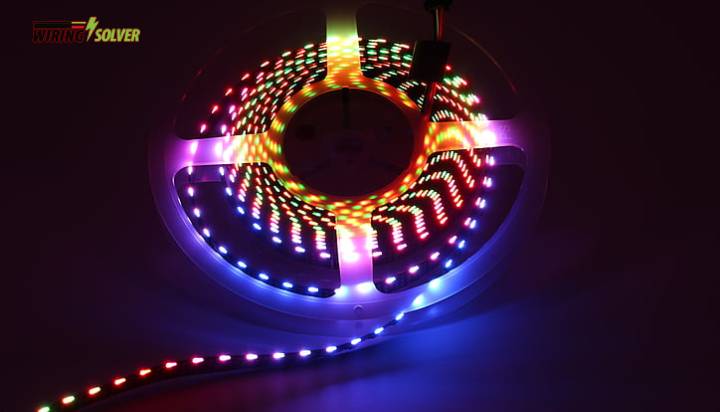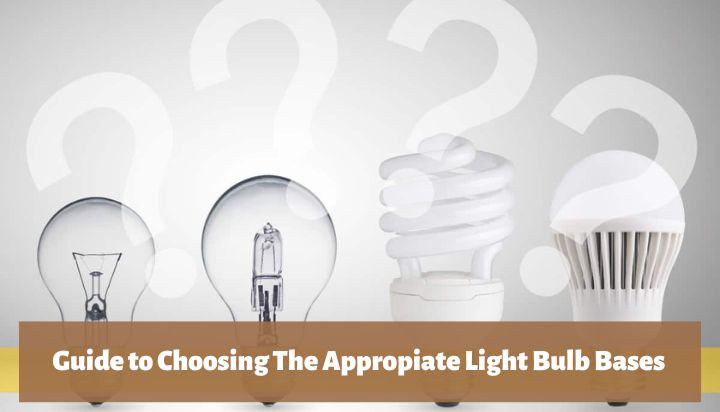LED strip lights are used to illuminate the home and business settings, and they come in a variety of colors and sizes. Unfortunately, they can malfunction, which can be frustrating.
A faulty LED strip can be caused by a variety of factors. such as broken LEDs, improper wiring, dry solder joints, etc. Some of these issues are simple to resolve. However, occasionally you might have to totally replace the LED strip.
This article will discuss the possible reasons why your LED strip lights are malfunctioning and how to fix them. It will go over the most common issues, as well as how to test and troubleshoot the LED lights.
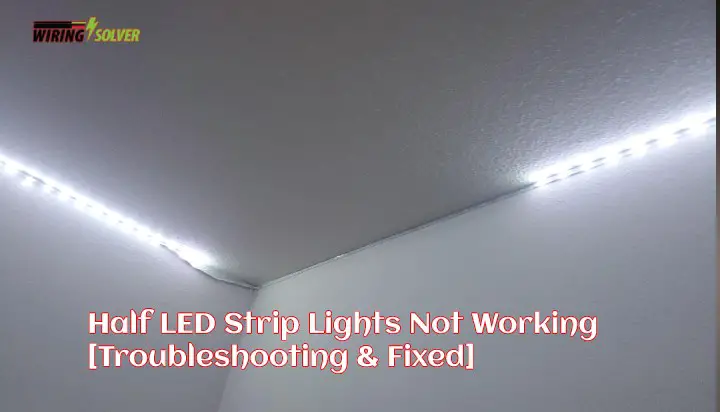
How do LED Strip Lights Work?
LED strips are made up of small LEDs, which are on the same or different chip. But they are all connected together and share the same power.

As can be seen from the above schematic (Fig 1), many LEDs are soldered on the same strip, all sharing the same voltage and ground.
If you’re wondering, why led lights stay on when switched off, what happens is that the serial connection of the LED strip clamps the circuit even when you turn the switch off.
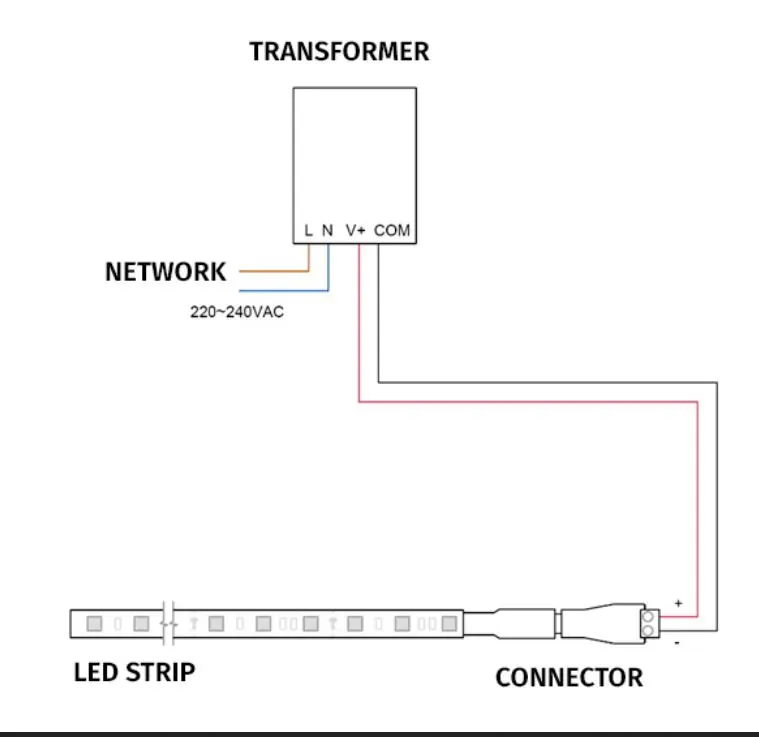
The above diagram (Fig 2) is a general diagram for connecting LED strips. You could also connect multiple led lights to one switch if you wish to.
What Causes LED Lights to Malfunction?
There are several reasons for a malfunctioning LED strip such as faulty wiring, damaged LED, bad solder, etc. You may take a look at this chart to figure out why.
LED Strip Malfunction Causes and Solutions
| Cause | Solution |
| Broken or fused LED | Change the broken LEDs |
| Overloaded power supply | Strengthen the power supply |
| Static electricity damage | Change an entire strip or a section |
| Too much bending of the LED strip | Straighten the strip |
| Dry solder joints | Change or re-solder the strip section |
| One color of the LED strip light not working | Correct the connection between the strip and the controller |
| Short Circuit | Re-solder or split solder connections |
| Metal fatigue due to heat | You may need to replace the damaged section |
| Faulty connections | Re-check the joints and re-solder if needed |
How to Fix Common LED Problems?
It is completely possible to fix a lot of problems for LED strips yourself, as they are pretty simple to fix if you know basic soldering.
However, you might need to remove recessed lights from housing clips before installing new ones. Now, let’s take a look below for simple fixes to some of these problems.
- Broken or Fused LED: The LEDs are connected in series often, so when one of them is fused, they prevent the others from lighting up as well. Remove the fused LED from the strip and replace it with a new working LED. It can be easily done with the help of a soldering iron.
- Overloaded Power Supply: Due to the overload of the power supply, all LEDs might not receive enough power to light up properly. In such a case, there are two fixes. Either increase the power of the supply or drop unnecessary load from the line.
- Static Electricity Damage: This is one of the major cases of malfunction of an LED strip. In such a case you must remove the entire damaged section of the LED strip, and in worst-case scenarios, the entire strip needs to be replaced.
- Bending Excessively: You could damage the LED strip if you bend them too much. Avoid excessive bending, especially near the joints or breakpoints.
- Dry Solder Joints: Dry solder joints prevent electricity from being passed which causes the strips to not light up properly. Thus to fix this problem you may replace the section of the LED strip, or attempt to re-solder them.
- Short Circuit: Short circuits are deadly for any electrical component no matter how big or small. If the components are not damaged, you can re-solder them properly and reuse the strip. But if the components are damaged, you have to replace the entire damaged section.
- Metal Fatigue Due to Heat: Another possible cause of the malfunction is insufficient heat sinking or failing to dissipate the heat generated by the LEDs. If the copper tracks are thick enough, the problem might be solved.
- Faulty Connections: In often cases, due to amateur soldering work, joints or connections are not made properly between the LED strips and the power supply. It is always good practice to double-check your connections and troubleshoot them properly to avoid such problems.
How to Properly Maintain LED Strip Lights?
To ensure that your LED strip lights last as long as possible, it’s important to properly maintain them. Here are a few tips for maintaining LED strip lights:
Clean them regularly:
LED strip lights can accumulate dust and debris over time, which can interfere with their functioning and reduce their lifespan.
To keep your LED strip lights clean, use a soft, dry cloth to gently wipe the strips and remove any dust or debris. Avoid using water or harsh cleaning agents, as these can damage the lights.
Handle them carefully:
LED strip lights are delicate and can be easily damaged if they are not handled carefully. When installing or handling LED strip lights, be sure to use gentle force and avoid bending or twisting the strips.
Protect them from water and moisture:
LED strip lights are not waterproof and can be damaged by water or moisture. To protect your LED strip lights, be sure to keep them away from water sources and use a waterproof adhesive or tape to secure them in place.
Use them properly:
LED strip lights are designed to be used in certain ways. To ensure that your LED strip lights last as long as possible, be sure to use them as intended and avoid overloading them or using them in ways that could damage them.
By following these simple maintenance tips, you can help ensure that your LED strip lights last for years to come.
Summary
Hope this article has given you a proper insight into why your LED strip lights are not working and how to fix them. With the right tools and knowledge, you can prevent this issue from happening again in the future.
It’s important to note that if the issue persists, it’s best to contact an expert for help. If you follow these troubleshooting steps, you should be able to get your LED strip lights functioning properly again.

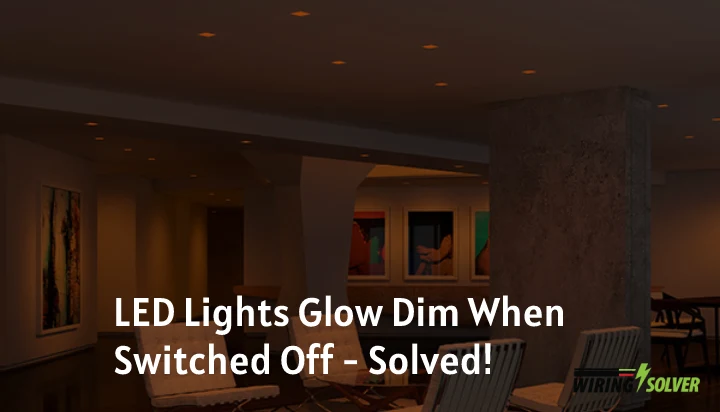
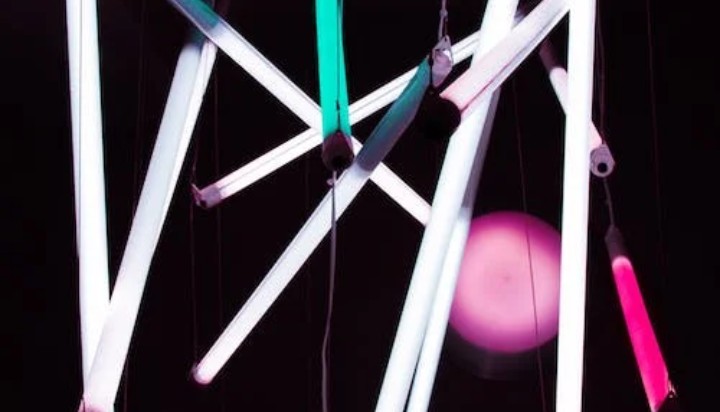
![Fluorescent Light Is Flickering [Cracked The Fix!]](https://wiringsolver.com/wp-content/uploads/2023/02/Fluorescent-Light-Is-Flickering.jpeg)
